There are many legends about cities consumed by the waves. Every civilization has its Atlantis story, its deluge myth. Then there are the cities we have chosen to drown. Sometimes only the spires of submerged churches point above the water, to serve as reminders of those lost places.
 Bell tower of a church in Lake Reschen, Italy (photograph by Sander van der Wel/Wikimedia)
Bell tower of a church in Lake Reschen, Italy (photograph by Sander van der Wel/Wikimedia)
In the modern era, our continued population movement into urban areas has led to an increased need for water in environments that simply cannot provide enough. Our solution? Dams. Unfortunately, in order to create reservoirs large enough for cities like New York, Shanghai, or Los Angeles, entire valleys need to be flooded, and in the early 20th century, little consideration was given to the populations of these valleys, whether human or animal.
Perhaps the most famous of these drowned towns is the “Lion City” of Shi Cheng in China. An ancient city, Shi Cheng dates back hundreds of years, and is now beneath the waters of Qiandao Lake. The city was drowned in 1959 to provide a reservoir for a hydroelectric dam, and now the white stone buildings seem to glow beneath the water.
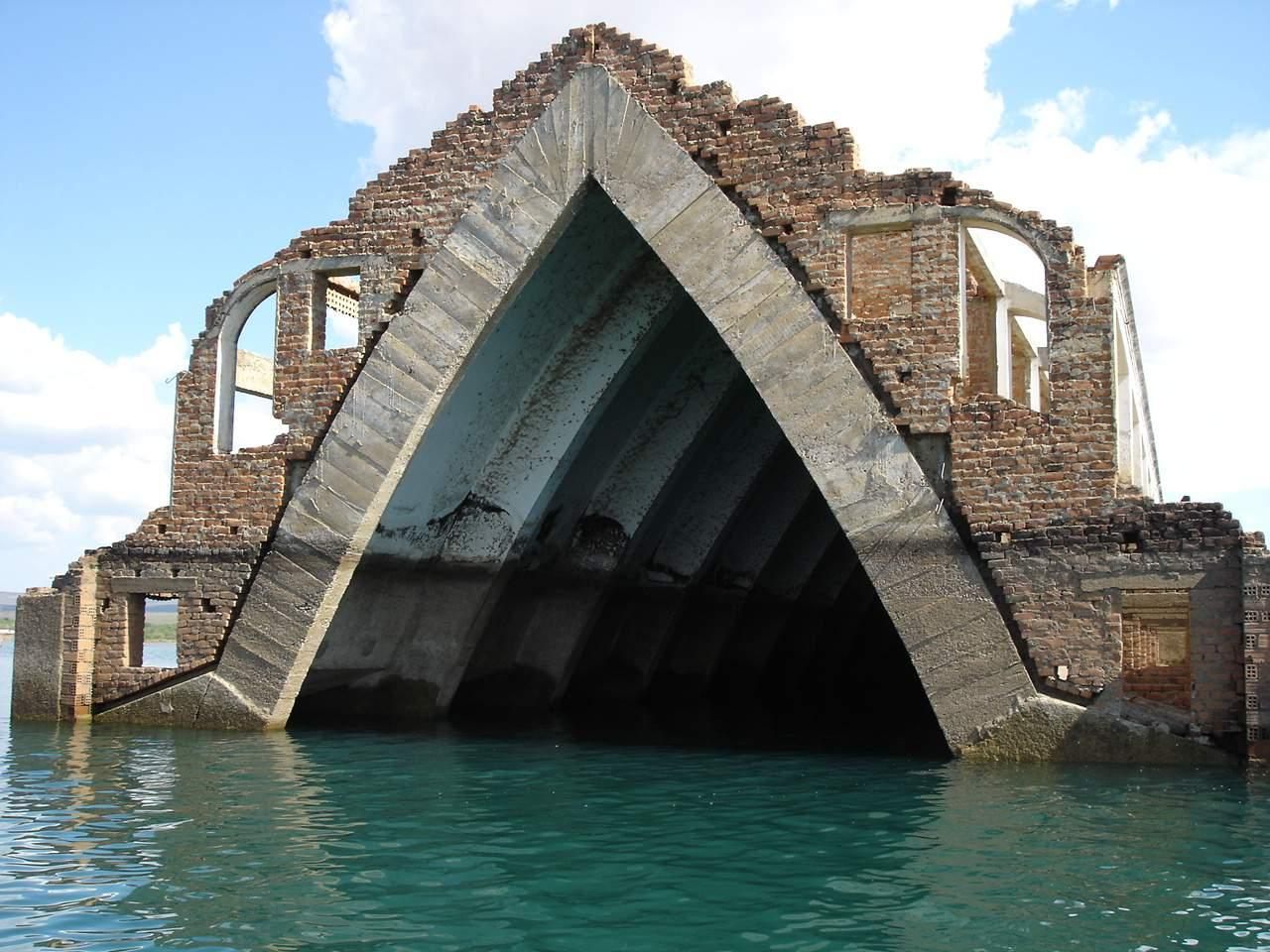 Church of the old Petrolândia (photograph by Andre Estima/Flickr)
Church of the old Petrolândia (photograph by Andre Estima/Flickr)
Old Petrolândia in Brazil is another drowned town, although it is nowhere near as well preserved as the Lion City. It was lost during the 1950s and 60s when vast construction programs and modernization works sprang up across Brazil. Critical to these advances was the construction of huge dams, to supply both hydroelectric power and vast reservoirs of fresh water. Entire towns were built as housing for those working on these construction projects, only to later be lost beneath the water.
Another drowned community in South America can now be seen again, as the reservoir that submerged it has shrunk, thanks to a drought blamed on El Niño. Potosí, Venezuela, was evacuated and then flooded in 1985, and has since been slowly uncovered again. At the time of its drowning, the city was home to 1,200 people. The image of the rising cross from a surviving church in the water was symbolic for the former inhabitants of the town, marking the location of their abandoned homes.
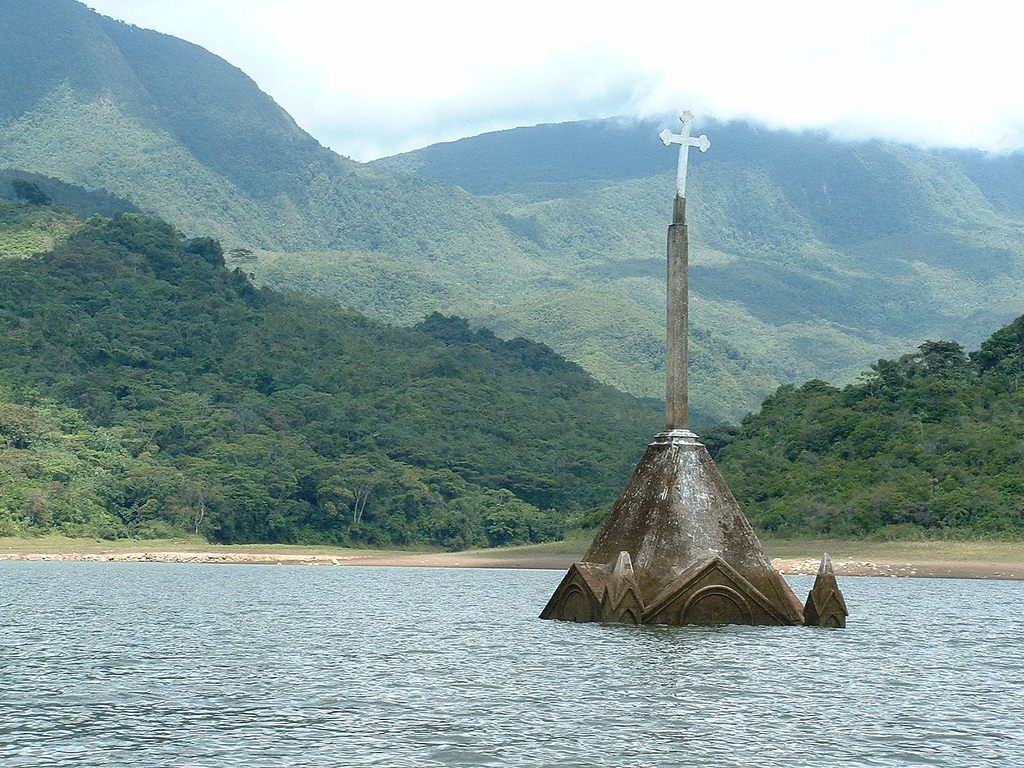 Cross of the drowned church of Potosí in 2005 (photograph by Juan Tello/Flickr)
Cross of the drowned church of Potosí in 2005 (photograph by Juan Tello/Flickr)
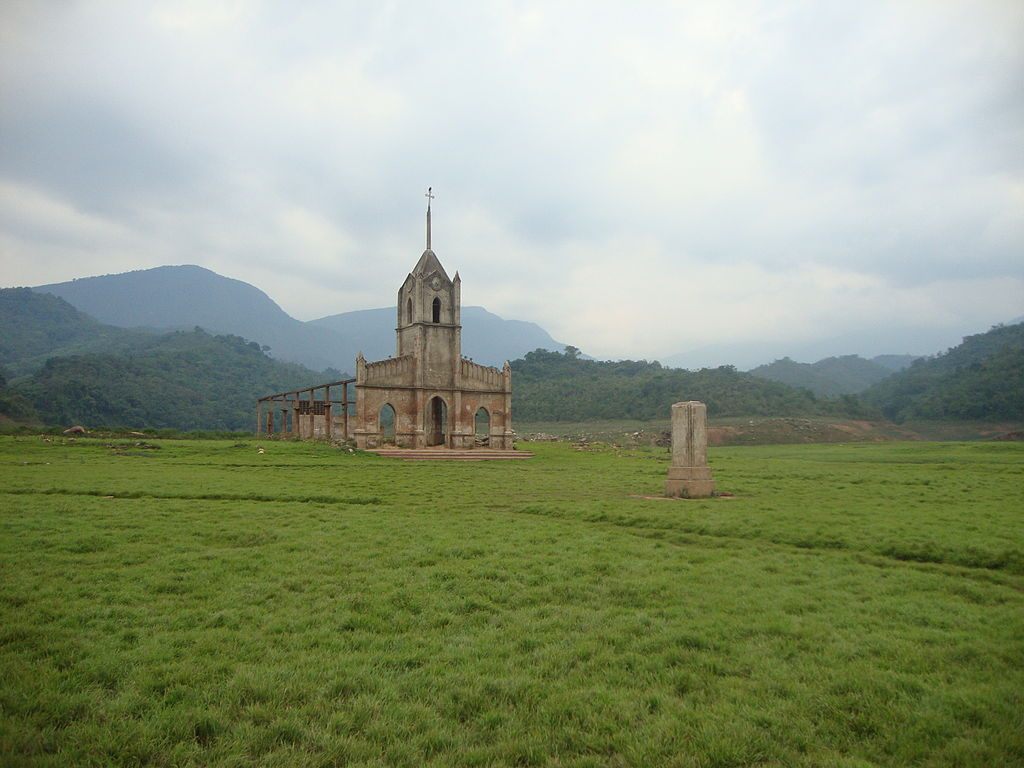 Potosí revealed in 2009 (photograph by Edprada/Wikimedia)
Potosí revealed in 2009 (photograph by Edprada/Wikimedia)
In the United States there are a number of towns swamped by progress. St. Thomas, Nevada, was founded as a Mormon settlement in 1865. It was flooded beneath Lake Mead, the reservoir that formed behind the Hoover Dam when it was completed in 1936. The remains of St. Thomas are visible again, as the water levels in Lake Mead are now low enough for the town to be almost as dry as before.
Perhaps the largest number of submerged towns in the United States are in New York State, with the construction of a number of dams and reservoirs over the years, particularly for New York City. Of the towns consumed to feed Gotham’s need for water, the most ironically named would have to be Neversink, now beneath the waters of the Neversink Reservoir. A new iteration of the town was built on higher ground above the reservoir when construction began in 1941.
 Vilarinho das Furnas in ruins (photograph by Benkeboy/Wikimedia)
Vilarinho das Furnas in ruins (photograph by Benkeboy/Wikimedia)
However, it’s not always modern settlement that’s lost, as we’ve already shown with China. In Italy, Romania, Spain, Portugal, Macedonia, and Russia there are dozens of architecturally beautiful and (in some cases) historically important towns beneath reservoirs. In Portugal, the village of Vilarinho das Furnas was flooded in 1972 — after more than 2,000 years of occupation. Vilarinho das Furnas is estimated to have been founded in 70 AD, as Roman roads were being constructed through the region.
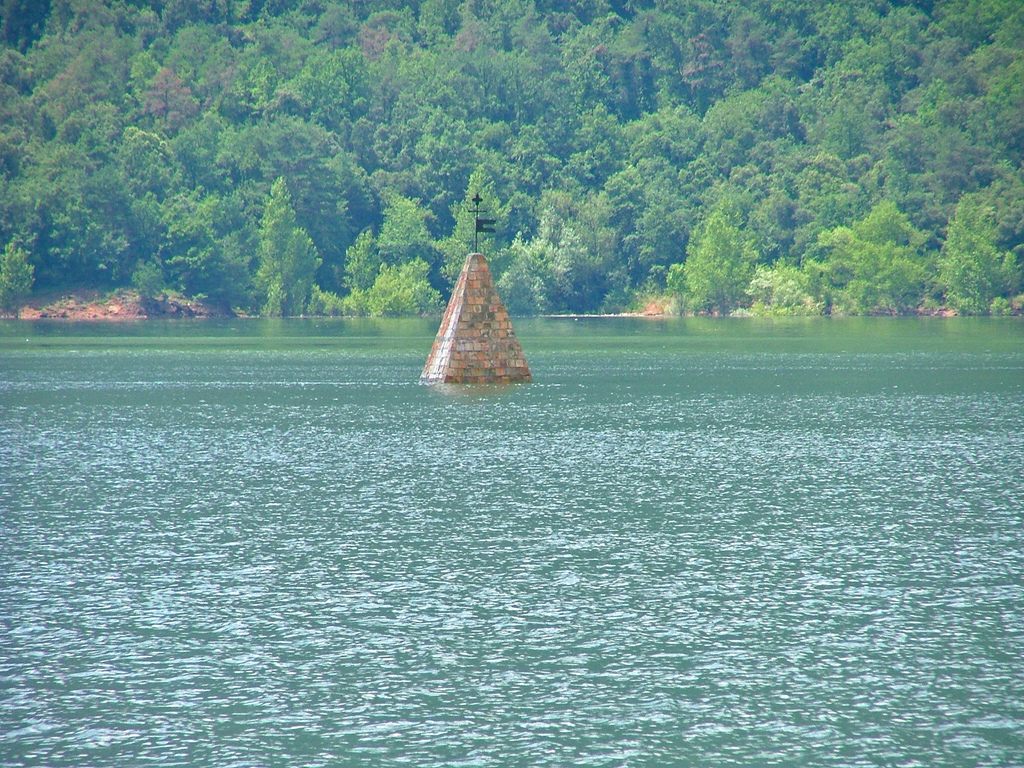 San Romà de Sau, Spain (photograph by Roberto Al/Flickr)
San Romà de Sau, Spain (photograph by Roberto Al/Flickr)
In Spain, the town of San Romà de Sau, which was more than 1,000 years old, was flooded in the 1960s. Also found in Spain is the opposite of a drowned town: the Temple of Debod. Donated by the Egyptian government as a way of thanking the Spanish for helping to repair the temples of Abu Simbel, the Temple of Debod was due to be flooded beneath the Aswan Dam. It now stands in Madrid.
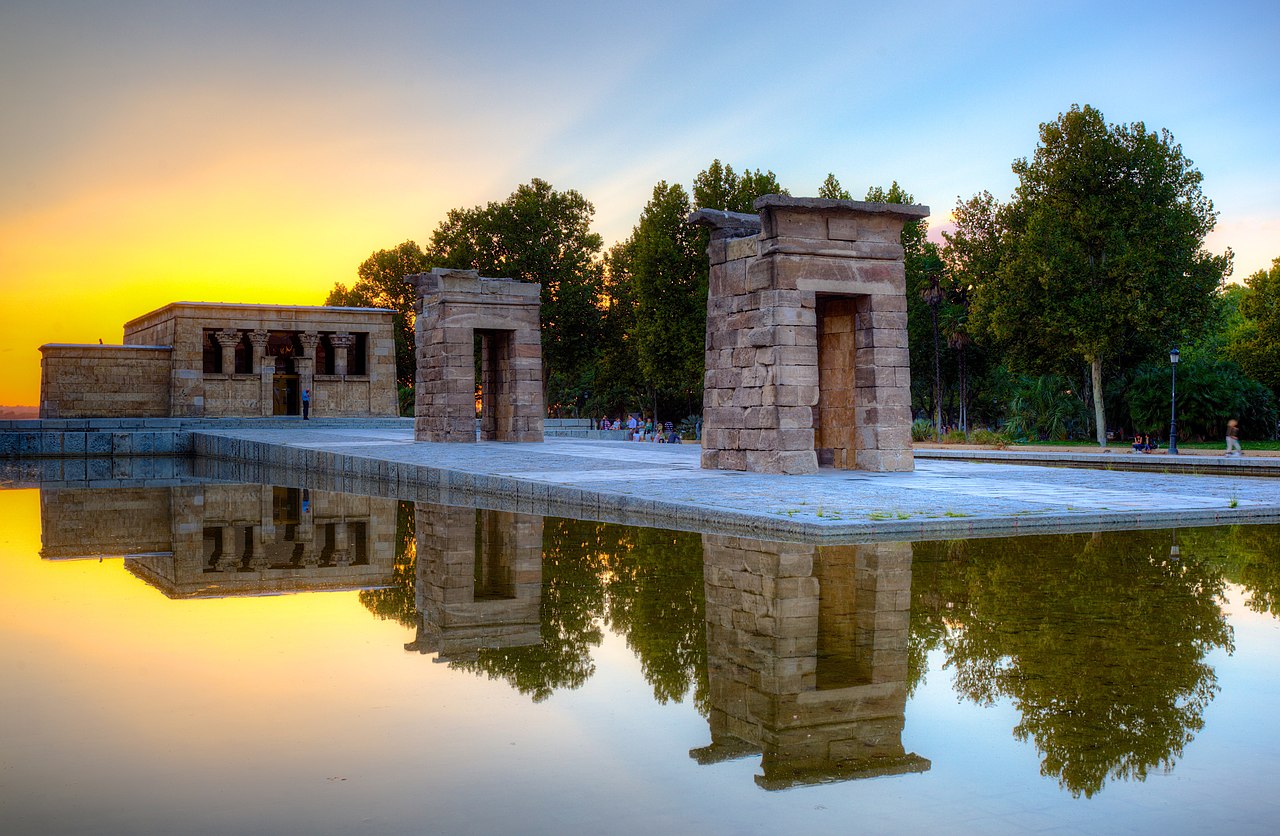 Templo de Debod, Madrid (photograph by Andrew J. Kurbiko/Wikimedia)
Templo de Debod, Madrid (photograph by Andrew J. Kurbiko/Wikimedia)
In Asia, and in India in particular, there are a number of temples and other sites that have been submerged, mostly through natural causes. However, the Jal Mahal (Water Palace) is a beautiful example of an architectural marvel lost to the need for water. The exact age of the palace is undetermined, although it predates the 16th century. The reservoir in which the palace now sits was dammed in the 16th century, to combat drought in the region, and the water level keeps the lower four levels of the palace beneath the water.
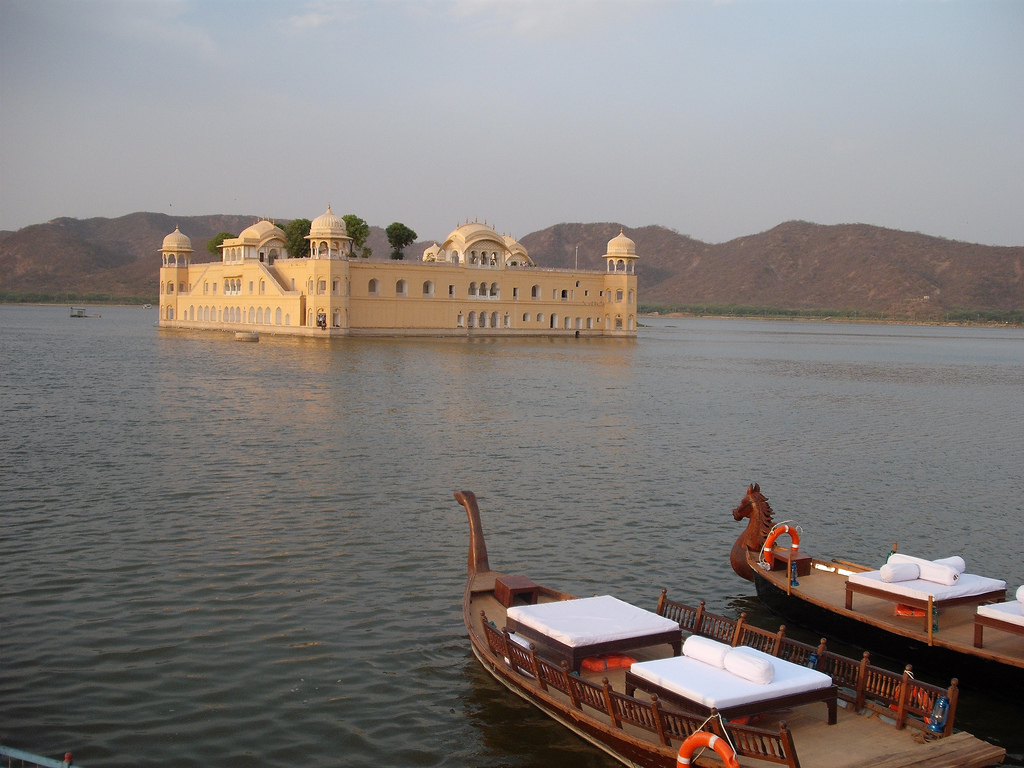
The Jal Mahal palace (via by the Jal Mahal Project)
We now live in an age where cities and towns are less likely to be drowned beneath dams and reservoirs — but will the rising sea levels promised to us through global warming provide new sunken cities? Urban areas like New York, Mumbai, Tokyo, and other major cities are below the predicted sea level rises of the future. These cities may even someday provide future archaeologists and historians with time capsules for looking into life of the 21st century.
 Bell tower of a church in Lake Reschen, Italy (photograph by Sander van der Wel/Wikimedia)
Bell tower of a church in Lake Reschen, Italy (photograph by Sander van der Wel/Wikimedia) Church of the old Petrolândia (photograph by Andre Estima/Flickr)
Church of the old Petrolândia (photograph by Andre Estima/Flickr) Potosí revealed in 2009 (photograph by Edprada/Wikimedia)
Potosí revealed in 2009 (photograph by Edprada/Wikimedia) Vilarinho das Furnas in ruins (photograph by Benkeboy/Wikimedia)
Vilarinho das Furnas in ruins (photograph by Benkeboy/Wikimedia) Templo de Debod, Madrid (photograph by Andrew J. Kurbiko/Wikimedia)
Templo de Debod, Madrid (photograph by Andrew J. Kurbiko/Wikimedia)

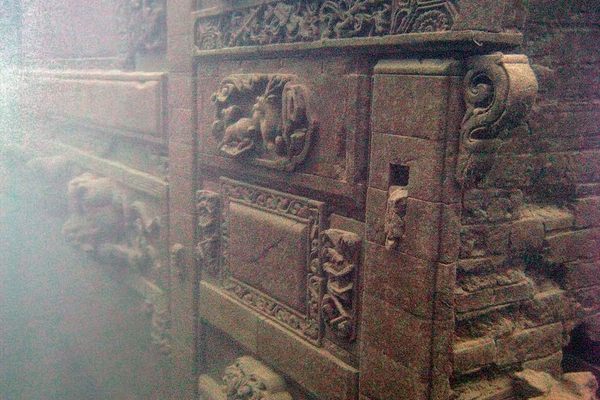
 Cross of the drowned church of Potosí in 2005 (photograph by
Cross of the drowned church of Potosí in 2005 (photograph by  San Romà de Sau, Spain (photograph by
San Romà de Sau, Spain (photograph by 

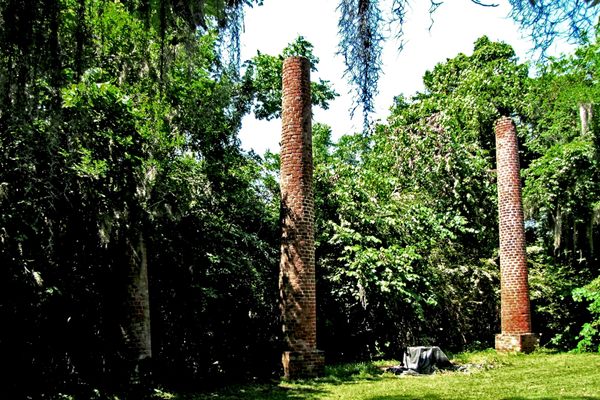

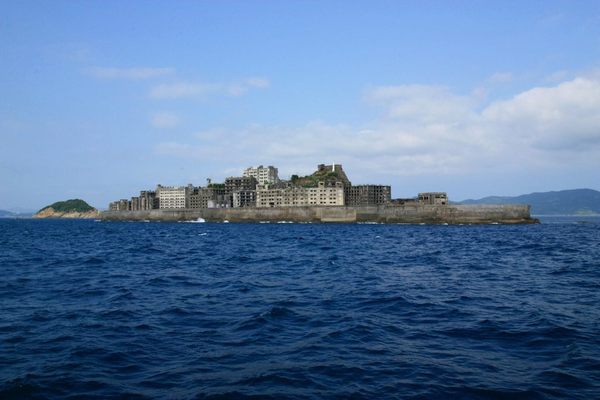









Follow us on Twitter to get the latest on the world's hidden wonders.
Like us on Facebook to get the latest on the world's hidden wonders.
Follow us on Twitter Like us on Facebook